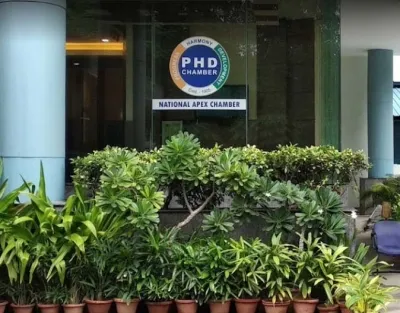Are Indian Small Finance Banks' Advances Set to Exceed Rs 2 Lakh Crore This Fiscal?

Synopsis
Key Takeaways
- Advances expected to exceed Rs 2 lakh crore
- Year-on-year growth projected at 16-17 percent
- Significant rise in non-microfinance advances
- Focus on diversification amid microfinance challenges
- Regulatory guidelines impact asset quality and growth strategies
New Delhi, Oct 28 (NationPress) The advances of small finance banks (SFBs) are set to exceed Rs 2 lakh crore this fiscal year, indicating a growth rate of 16-17 percent year-on-year (YoY), which is higher than last fiscal’s 13 percent growth, according to a report released on Tuesday.
This increase is anticipated to be fueled by ongoing expansion in the non-microfinance segments, alongside a measured recovery of the microfinance loan portfolio from the previous year's decline.
Amidst this robust credit growth, establishing a granular and sustainable liability franchise remains essential for SFBs, as noted in a report by Crisil Ratings.
The report highlights that the proportion of non-microfinance advances in SFB loans rose to 67 percent by March 2025, up from 50 percent in March 2022.
Within this category, mortgage loans (including housing loans and loans against property) commanded the largest share, achieving an estimated 3-year compound annual growth rate (CAGR) of 38 percent.
Subsequently, vehicle loans and loans for micro, small, and medium enterprises (MSMEs) followed, with growth rates of 32 percent and 31 percent over three years, respectively.
Additionally, SFBs have broadened their loan portfolios by increasing shares of gold loans, agricultural credit, loans against fixed deposits, and wholesale funding in recent fiscal years.
“This fiscal year, credit growth in the non-microfinance segments is projected to be between 23-25 percent. Lower interest rates are expected to boost demand for affordable housing, along with policy incentives for MSMEs and the recent reduction in goods and services tax on vehicle loans,” commented Aparna Kirubakaran, Director at Crisil Ratings.
Conversely, microfinance is projected to grow at a slower pace of 4-5 percent, marking a recovery from last fiscal’s 14 percent decline.
The report also notes that segment diversification has been a longstanding growth strategy for SFBs, many of which transitioned from being microfinance institutions (MFIs).
This strategy will persist this fiscal year, especially as recent challenges in microfinance prompt a heightened focus on diversification to mitigate asset-quality risks.
Diversification remains vital, as Reserve Bank of India (RBI) guidelines impose thresholds of 3 percent for gross non-performing assets and 1 percent for net non-performing assets, crucial for SFBs aiming for a universal banking license.
Given the vulnerability of microfinance loans to sociopolitical pressures, diversifying into secured asset classes is expected to bolster asset quality. Furthermore, these guidelines favor SFBs with a diversified loan portfolio, the report asserts.








